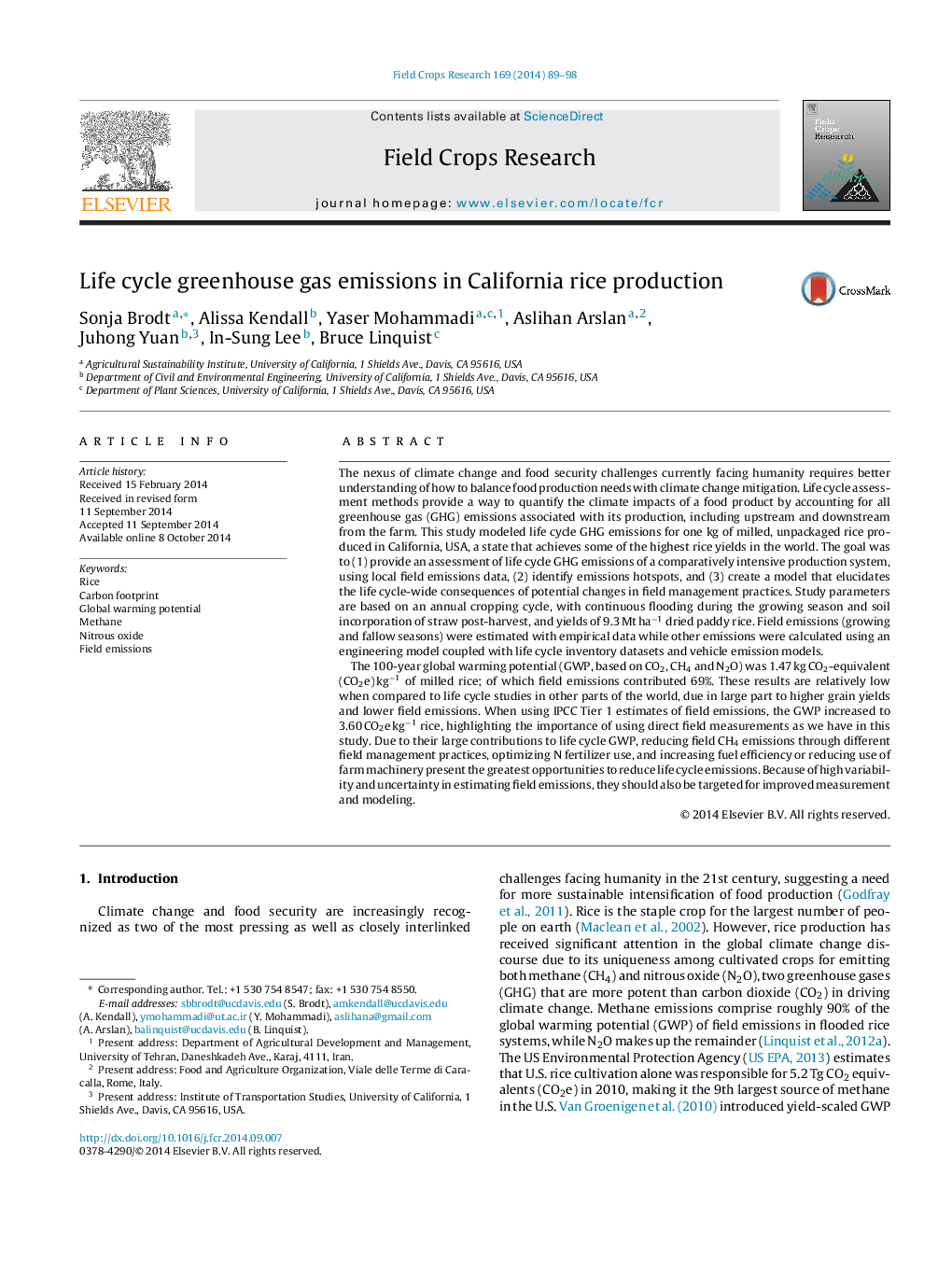| کد مقاله | کد نشریه | سال انتشار | مقاله انگلیسی | نسخه تمام متن |
|---|---|---|---|---|
| 4509952 | 1624694 | 2014 | 10 صفحه PDF | دانلود رایگان |
• Net life cycle emissions for milled rice are 1.47 kg CO2 equivalents kg−1 rice.
• Annual field emissions, dominated by methane, comprise 69% of life cycle emissions.
• IPCC Tier 1 field emissions estimates are 2–3 times higher than field measurements.
• Fallow season field emissions comprise 14% of total annual field emissions.
• Rice hulls and bran co-products offset 8% of life cycle emissions.
The nexus of climate change and food security challenges currently facing humanity requires better understanding of how to balance food production needs with climate change mitigation. Life cycle assessment methods provide a way to quantify the climate impacts of a food product by accounting for all greenhouse gas (GHG) emissions associated with its production, including upstream and downstream from the farm. This study modeled life cycle GHG emissions for one kg of milled, unpackaged rice produced in California, USA, a state that achieves some of the highest rice yields in the world. The goal was to (1) provide an assessment of life cycle GHG emissions of a comparatively intensive production system, using local field emissions data, (2) identify emissions hotspots, and (3) create a model that elucidates the life cycle-wide consequences of potential changes in field management practices. Study parameters are based on an annual cropping cycle, with continuous flooding during the growing season and soil incorporation of straw post-harvest, and yields of 9.3 Mt ha−1 dried paddy rice. Field emissions (growing and fallow seasons) were estimated with empirical data while other emissions were calculated using an engineering model coupled with life cycle inventory datasets and vehicle emission models.The 100-year global warming potential (GWP, based on CO2, CH4 and N2O) was 1.47 kg CO2-equivalent (CO2e) kg−1 of milled rice; of which field emissions contributed 69%. These results are relatively low when compared to life cycle studies in other parts of the world, due in large part to higher grain yields and lower field emissions. When using IPCC Tier 1 estimates of field emissions, the GWP increased to 3.60 CO2e kg−1 rice, highlighting the importance of using direct field measurements as we have in this study. Due to their large contributions to life cycle GWP, reducing field CH4 emissions through different field management practices, optimizing N fertilizer use, and increasing fuel efficiency or reducing use of farm machinery present the greatest opportunities to reduce life cycle emissions. Because of high variability and uncertainty in estimating field emissions, they should also be targeted for improved measurement and modeling.
Journal: Field Crops Research - Volume 169, December 2014, Pages 89–98
